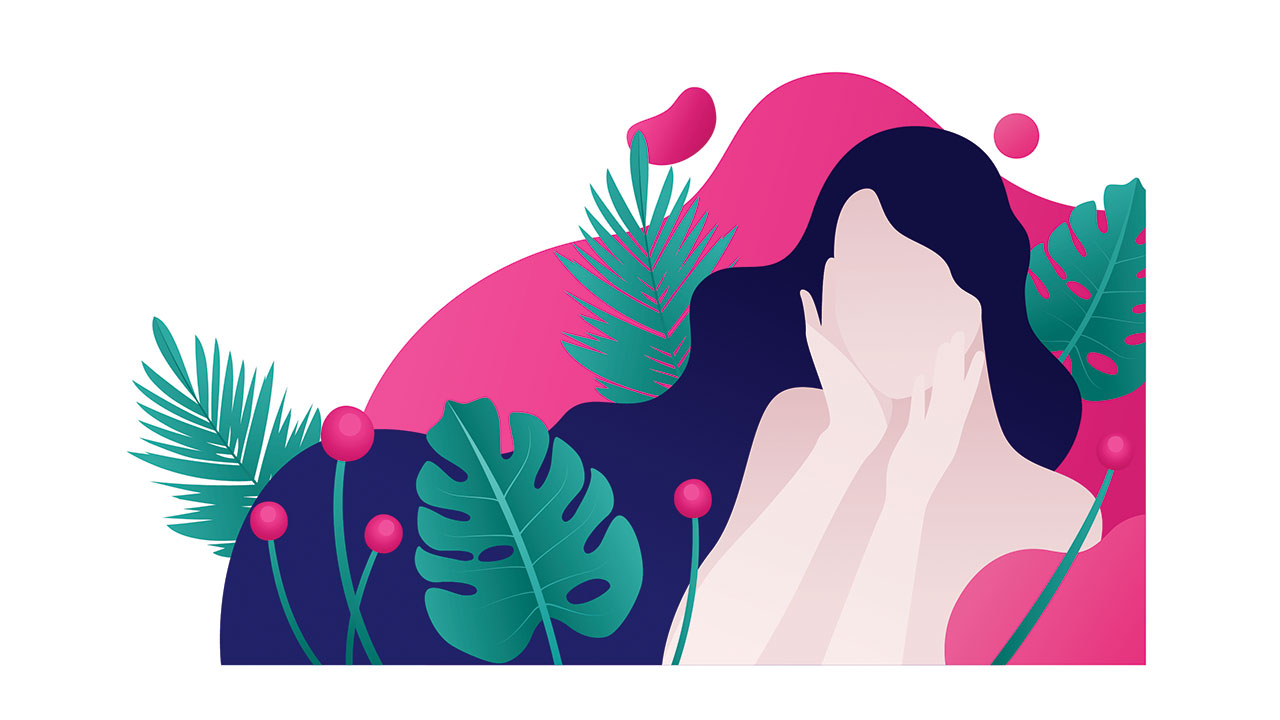
Beyond Brushstrokes
By Maria Victoria Rufino

The obsession with beauty and health has become extreme.
“Health is what sells,” Professor Elizabeth Haiken wrote in her book, Venus Envy: A History of Cosmetic Surgery.
The commercial thrust is evident in how products are marketed. Innovation is the key.
Through years of subliminal programing and media conditioning, people confuse the concept of health with a beautiful face, a slim body, and youth. The multibillion-dollar beauty industry projects the ultimate image of a perfect figure and flawless face. A sexy icon, the perennial image on billboards and ads, makes people aspire to look perfect.
“Wellness” is the term used to market the booming spa and cosmetic surgery sub-categories of the beauty industry. Vitamin supplements and quick magic fixes are recommended.
Health and beauty have been intricately linked and promoted by traditional media and social media. Seductive TV and magazine advertisements heighten the desire for eternal youth. The ads entice potential customers to “feed your skin.” The healthy glow comes from nourishing cosmetics, sea extracts, oxygen treatments, and detox flush weekends. Yoga and vegetarian dishes are offered as well.
The consumer (male or female) with disposable income wants infinite ways to look and feel healthy and fit. The industry discovers and formulates innovative products and treatments to meet those needs.
It is the law of supply and demand.
People like to identify with good-looking celebrities who endorse miracle products: the young athlete who wins the race, the gymnast who has medals, the shapely model who cavorts in the surf or rides a horse on the beach to promote a vitamin, a drink. (Sometimes, there is no truth in advertising.)
Caveat emptor.
One tends to envision health as a perpetually youthful package — too good to be real. Good health is always associated with sparkling eyes, lustrous hair, shiny teeth, a glowing complexion, and a supple physique. Ill health, in contrast, is seen in a plain-looking person with stringy hair, sallow skin, and a bony frame.
Surveys reveal there is no relationship between the prettiest face and the healthiest person in an individual basis.
To illustrate, Michael Kalick, a psychologist at the University of Massachusetts, took research data that began in 1930 and lasted 40 years. The same volunteers (already in their ’60s) were rated according to how healthy they were in their youth and later in life. The study was meant to determine where the healthiest people were rated the most attractive. The results were surprising.
They did not find a relationship. “Those with the fewest medical problems when they grew older were not better looking than those plagued with ill health. People really think that attractiveness indicate health… They are mistaken about it,” Professor Kalick concluded.
Health foods and health clubs, the big money makers, have more to do with beauty than disease prevention.
“Disease prevention seems so distant, and beauty is immediate. If I take care of myself, I might slightly diminish my risk for heart disease in the future. But I might look better next week,” New York Times writer Gina Kolata commented.
In the 19th Century, Charles Darwin develop the theory of evolution. His colleague, Alfred Russell Wallace, observed that male birds have brightly colored plumage that were attractive to both female birds and predators. The fiery Prof. Wallace concluded that female birds chose the fiery feathered males because they appeared healthier.
In this millennium, people are more self-obsessed and age defiant. Thus, there are more serums, surgery, laser, Botox, liposuction, or the safe non-invasive treatments to minimize the marks of the passage of time on the face and body. Self-improvement with a high-tech make-over.
There is nothing wrong with having some procedures and creams if they are not overdone. (We see the scary results of too much stretching and plumping.)
It is the promise (and myth) of eternal youth in a pill or an expensive stitch. The quick fix to control the hormonal shifts.
Cosmetics — regardless of vitamins, herbs, and minerals — can give the glow of youth. A bottle of hair dye can cover the gray hair. Cosmetic dentistry can produce straight, white, porcelain teeth. Nips and tucks and shots can improve the appearance and boost the morale.
What people buy is not health but the illusion of it — in a shiny package. The incredible new caviar cream with complex vitamins might help delay the clock.
In the search for the fabled fountain of youth, people are trying to reverse the ravage of time. So, they take the exotic elixir or cure-all potion, attach the IVs with antioxidants that whiten their skin, and risk painful surgery to dissolve bulges and eradicate wrinkles.
As Groucho Marx once quipped, “She got her good looks from her father — he’s a plastic surgeon.”
The desire to look younger is normal. A good lifestyle, balanced diet, and moderate exercise promote health and prevent disease to a certain degree.
It is important to remember that physical perfection always be out of reach. No matter how hard we try.
Beauty is skin deep.
It seems so easy to acquire beauty in a jar.
What we should try to attain is the elusive state of inner harmony and peace of mind. It evokes the aura of real beauty and a spiritual sense of balance that can never be bought
Maria Victoria Rufino is an artist, writer and businesswoman. She is president and executive producer of Maverick Productions.